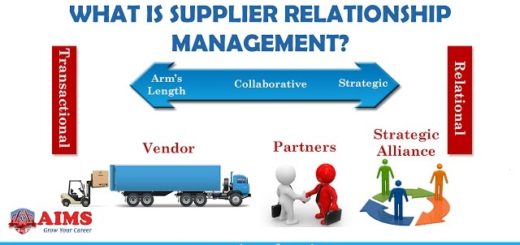Understanding and Optimizing Inventory in Supply Chains
Introduction
Inventory is a critical component of any supply chain. It is the lifeblood of the supply chain, providing the necessary resources to meet customer demand. Understanding and optimizing inventory in supply chains is essential for businesses to remain competitive and profitable. This involves understanding the different types of inventory, the costs associated with inventory, and the strategies for managing inventory. Additionally, it is important to understand the impact of inventory on customer service, cost, and profitability. By understanding and optimizing inventory in supply chains, businesses can ensure that they are able to meet customer demand while minimizing costs and maximizing profits.
How to Use Data Analytics to Improve Inventory Management in Supply Chains
Inventory management is a critical component of any successful supply chain. By leveraging data analytics, businesses can gain valuable insights into their inventory levels and optimize their supply chain operations.
Data analytics can be used to identify trends in inventory levels, such as seasonal fluctuations or changes in demand. This information can be used to adjust inventory levels accordingly, ensuring that the right amount of stock is available at the right time.
Data analytics can also be used to identify areas of inefficiency in the supply chain. For example, data analytics can be used to identify bottlenecks in the supply chain, such as slow delivery times or high levels of stock wastage. By identifying and addressing these issues, businesses can improve their inventory management and reduce costs.
Data analytics can also be used to identify opportunities for cost savings. For example, data analytics can be used to identify areas where inventory levels can be reduced without impacting customer service. This can help businesses reduce their inventory costs and improve their bottom line.
Finally, data analytics can be used to identify opportunities for improving customer service. By analyzing customer data, businesses can identify areas where they can improve their customer service, such as faster delivery times or better product availability. This can help businesses increase customer satisfaction and loyalty.
By leveraging data analytics, businesses can gain valuable insights into their inventory levels and optimize their supply chain operations. This can help businesses reduce costs, improve customer service, and increase their bottom line.
The Benefits of Automating Inventory Management in Supply Chains
Automating inventory management in supply chains can provide numerous benefits to businesses. Automation can help streamline processes, reduce costs, and improve accuracy. By automating inventory management, businesses can gain greater visibility into their supply chain, allowing them to make more informed decisions and better manage their resources.
One of the primary benefits of automating inventory management is improved accuracy. Automation eliminates the need for manual data entry, which can lead to errors and inaccuracies. Automation also allows businesses to track inventory in real-time, ensuring that they always have an accurate picture of their inventory levels. This can help businesses avoid costly stock-outs and overstocks.
Automation also helps businesses reduce costs. Automation eliminates the need for manual labor, which can be expensive. Automation also helps businesses reduce the amount of time spent on inventory management tasks, allowing them to focus on other areas of their business. Automation can also help businesses reduce the amount of time spent on paperwork, as well as the amount of time spent on tracking and managing inventory.
Automation also helps businesses gain greater visibility into their supply chain. Automation allows businesses to track inventory levels in real-time, giving them a better understanding of their supply chain. This can help businesses identify potential problems and take corrective action before they become major issues. Automation also allows businesses to track the performance of their suppliers, allowing them to make more informed decisions about their supply chain.
Finally, automating inventory management can help businesses improve customer service. Automation can help businesses reduce the amount of time it takes to fulfill orders, allowing them to provide faster and more efficient service to their customers. Automation can also help businesses reduce the amount of time it takes to process returns, allowing them to provide better customer service.
In summary, automating inventory management in supply chains can provide numerous benefits to businesses. Automation can help streamline processes, reduce costs, and improve accuracy. Automation can also help businesses gain greater visibility into their supply chain, allowing them to make more informed decisions and better manage their resources. Automation can also help businesses improve customer service, allowing them to provide faster and more efficient service to their customers.
Strategies for Optimizing Inventory Levels in Supply Chains
1. Utilize Automation: Automation can help streamline the inventory management process, allowing for more accurate and timely tracking of inventory levels. Automation can also help reduce the amount of manual labor required to manage inventory, freeing up resources for other tasks.
2. Implement Just-in-Time (JIT) Inventory Management: JIT inventory management is a strategy that focuses on reducing inventory levels by only ordering what is needed when it is needed. This helps to reduce the amount of inventory that needs to be stored and managed, resulting in cost savings.
3. Utilize Vendor-Managed Inventory (VMI): VMI is a strategy that allows suppliers to manage inventory levels on behalf of the customer. This helps to reduce the amount of time and resources required to manage inventory, as well as reducing the risk of stockouts.
4. Utilize Cross-Docking: Cross-docking is a strategy that involves receiving goods from suppliers and immediately shipping them out to customers, without storing them in inventory. This helps to reduce the amount of inventory that needs to be stored and managed, resulting in cost savings.
5. Utilize Data Analytics: Data analytics can help to identify trends in inventory levels and provide insights into how to optimize inventory levels. This can help to reduce the amount of inventory that needs to be stored and managed, resulting in cost savings.
6. Utilize Forecasting: Forecasting can help to predict future demand for products and services, allowing for more accurate inventory planning. This can help to reduce the amount of inventory that needs to be stored and managed, resulting in cost savings.
7. Utilize Collaborative Planning, Forecasting, and Replenishment (CPFR): CPFR is a strategy that involves collaboration between suppliers and customers to plan, forecast, and replenish inventory levels. This helps to reduce the amount of inventory that needs to be stored and managed, resulting in cost savings.
The Impact of Inventory Management on Supply Chain Performance
Inventory management is a critical component of supply chain performance. It is the process of managing the flow of goods and services from the point of origin to the point of consumption. It involves the tracking, storage, and movement of inventory items, as well as the coordination of activities related to inventory management.
The impact of inventory management on supply chain performance is significant. Effective inventory management can help to reduce costs, improve customer service, and increase profits. It can also help to reduce the risk of stockouts, improve the accuracy of inventory records, and reduce the amount of time and resources spent on inventory management.
Inventory management can help to reduce costs by reducing the amount of inventory that needs to be held in stock. This can be achieved by reducing the amount of inventory that is held in stock, as well as by reducing the amount of time and resources spent on inventory management. Additionally, inventory management can help to reduce the risk of stockouts by ensuring that the right amount of inventory is available when needed.
Inventory management can also help to improve customer service by ensuring that the right amount of inventory is available when needed. This can help to reduce the amount of time customers have to wait for their orders to be fulfilled. Additionally, inventory management can help to improve the accuracy of inventory records by ensuring that the right amount of inventory is available when needed.
Finally, inventory management can help to reduce the amount of time and resources spent on inventory management. This can be achieved by automating certain processes, such as ordering and tracking inventory, as well as by streamlining the process of managing inventory.
In conclusion, inventory management is a critical component of supply chain performance. It can help to reduce costs, improve customer service, and increase profits. Additionally, it can help to reduce the risk of stockouts, improve the accuracy of inventory records, and reduce the amount of time and resources spent on inventory management. Therefore, it is essential for businesses to implement effective inventory management strategies in order to maximize their supply chain performance.
Conclusion
In conclusion, understanding and optimizing inventory in supply chains is essential for businesses to remain competitive in today’s market. By understanding the different types of inventory, the importance of inventory management, and the various strategies for optimizing inventory, businesses can ensure that their supply chain is running efficiently and effectively. Additionally, businesses should consider the use of technology to help them better manage their inventory and ensure that their supply chain is running smoothly.
Inventory Resources
- ABC Analysis in Inventory Management.
- End To End Supply Chain Management Process.
- How Amazon Receives Your Inventory.
- How Apple’s Inventory Management is So Lean.
- Supply Chain Inventory Optimization.
- What is Inventory Management.










































